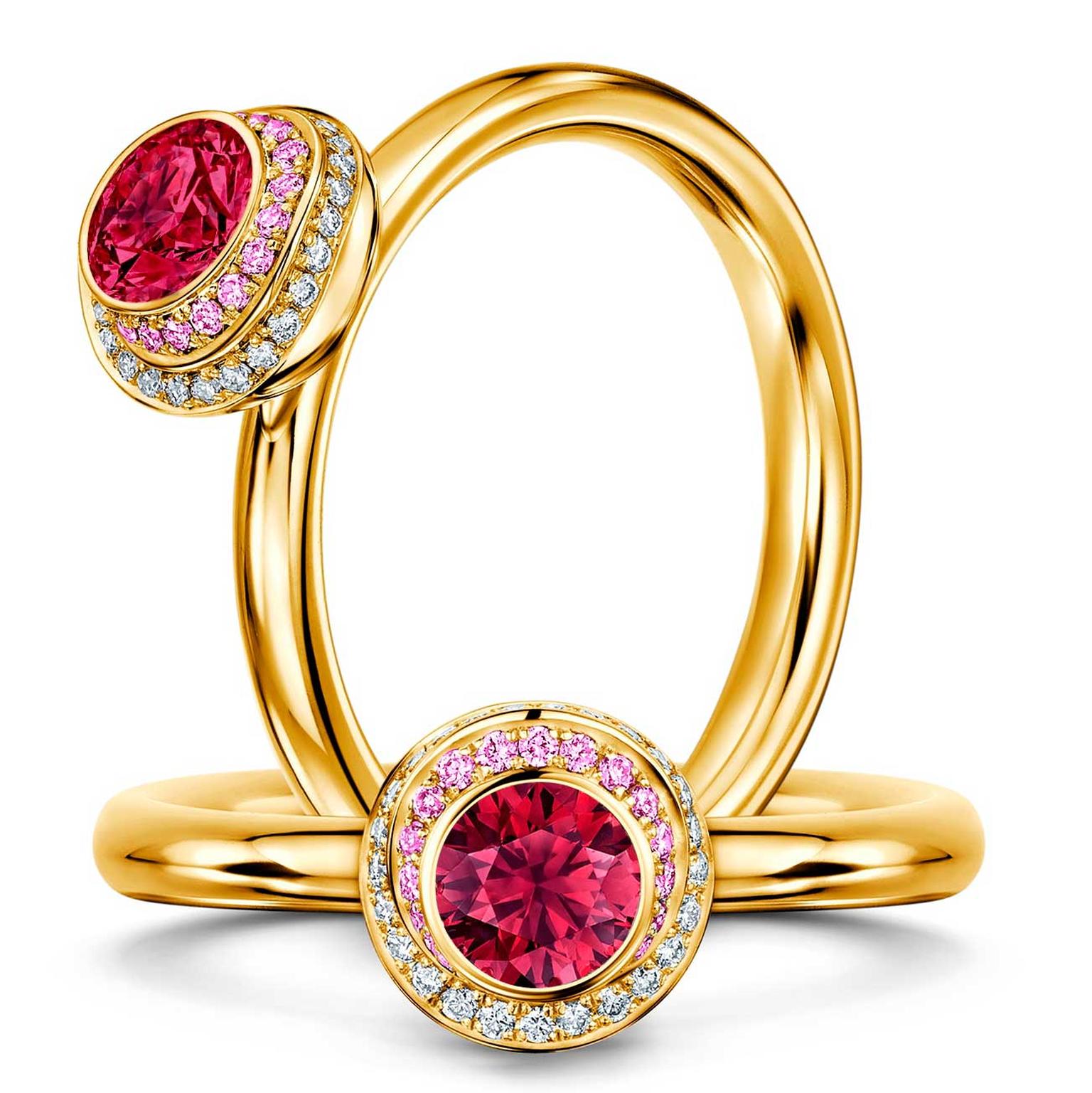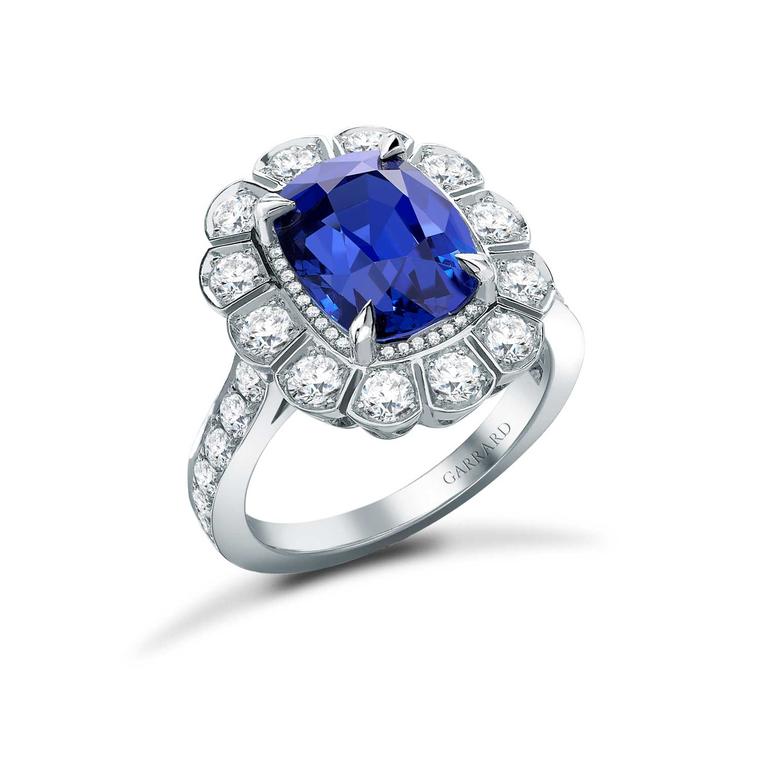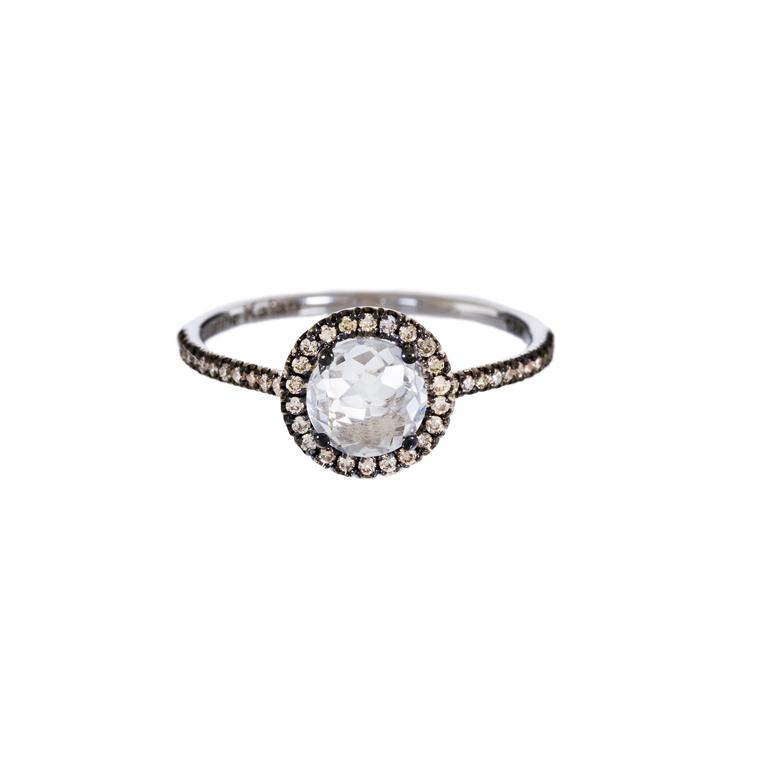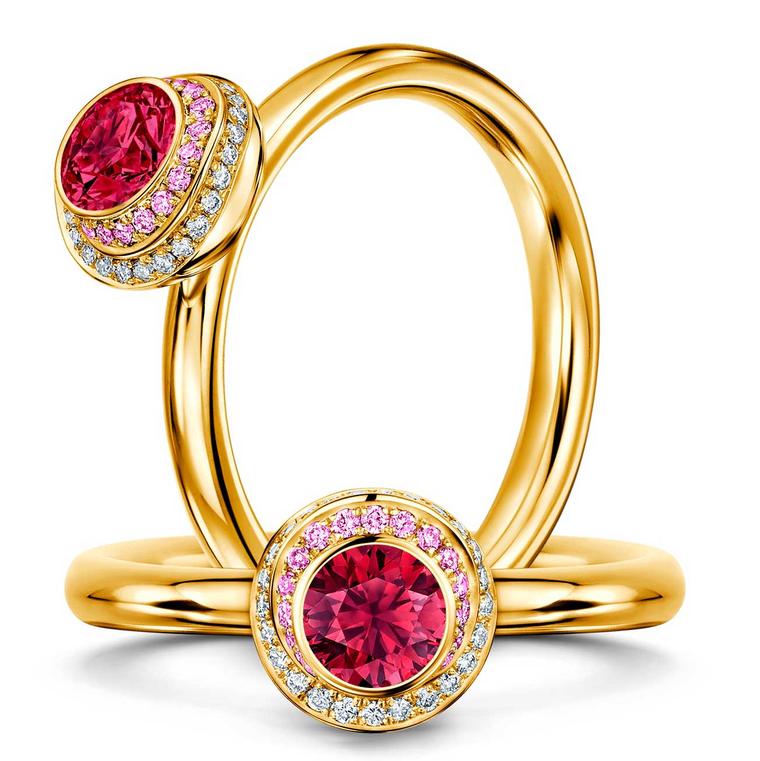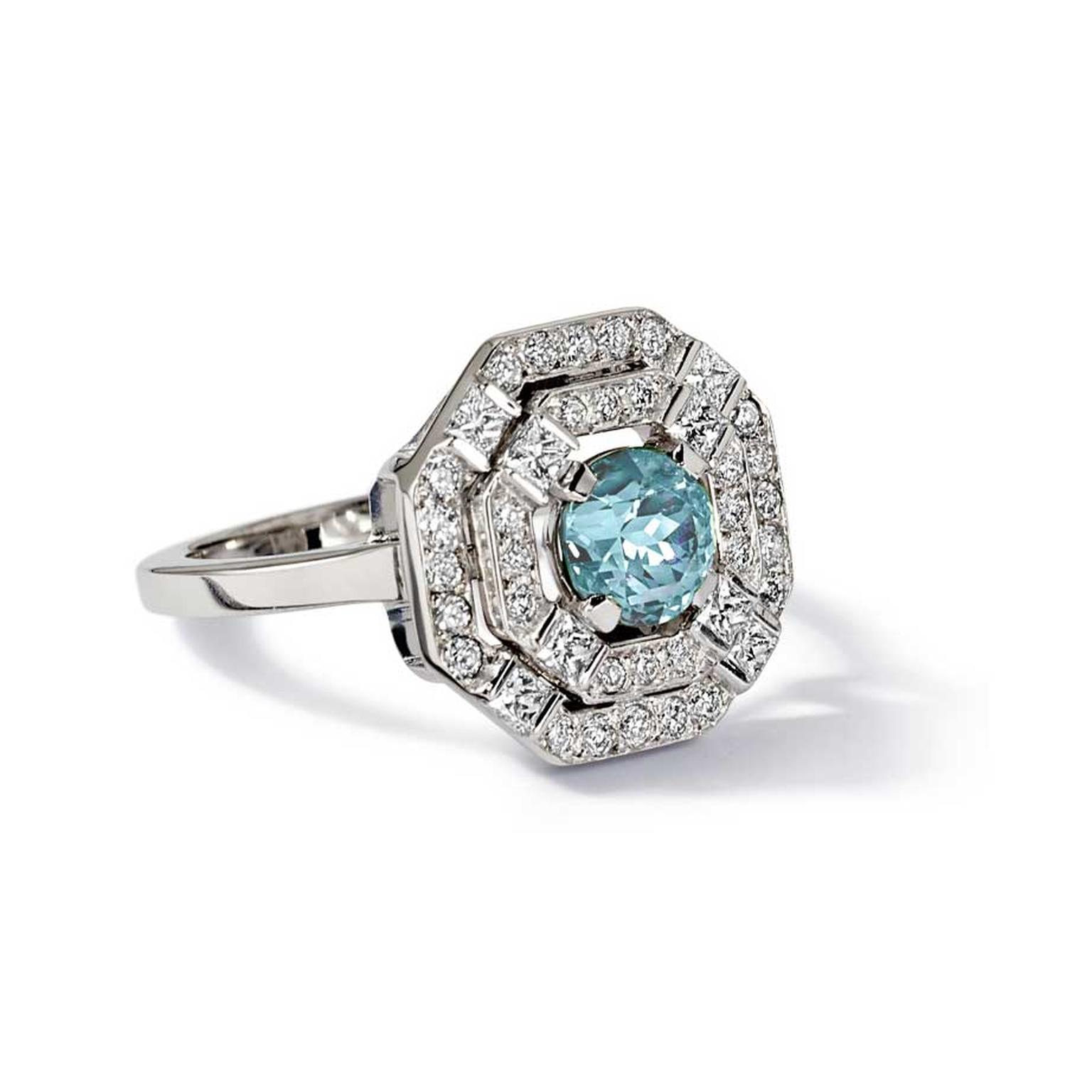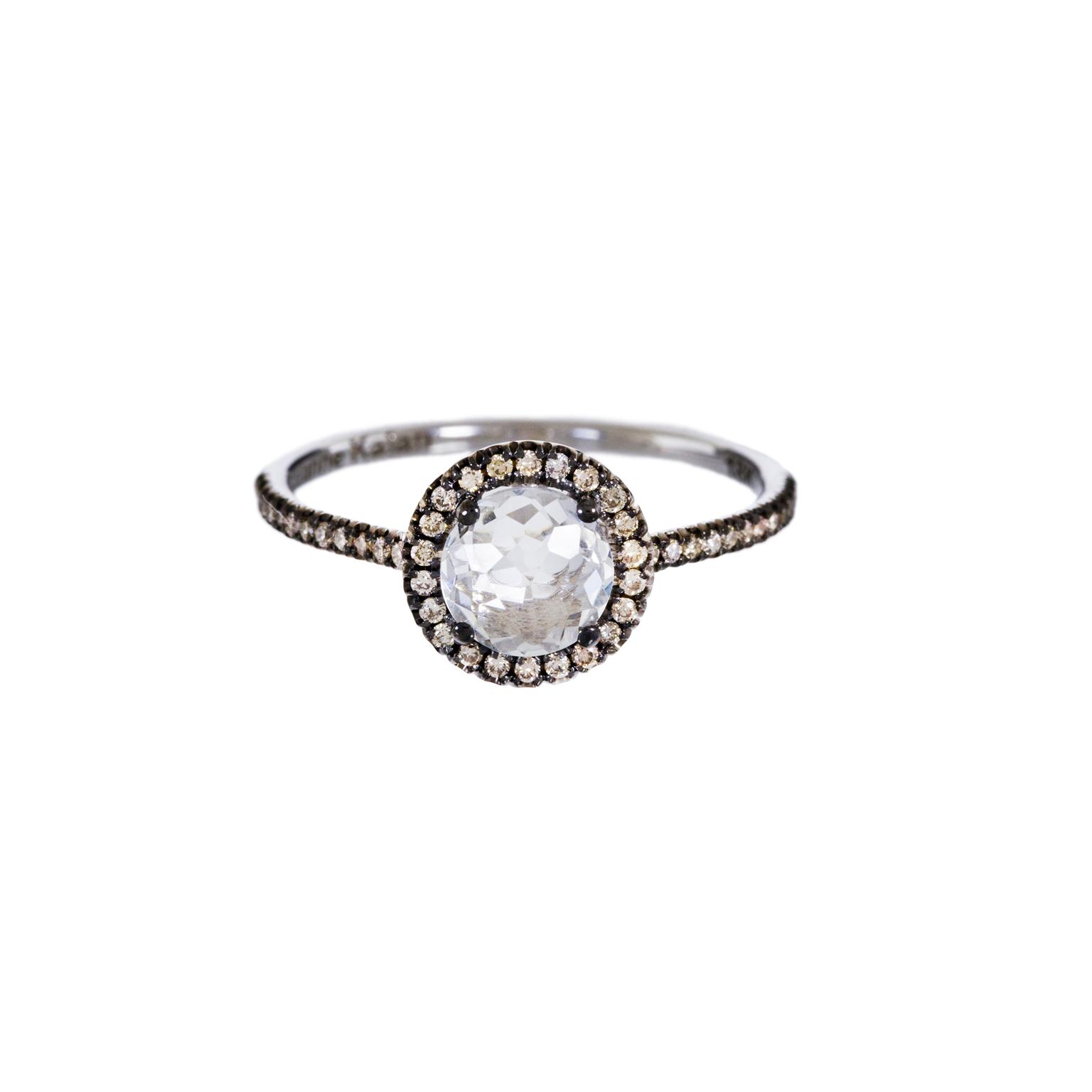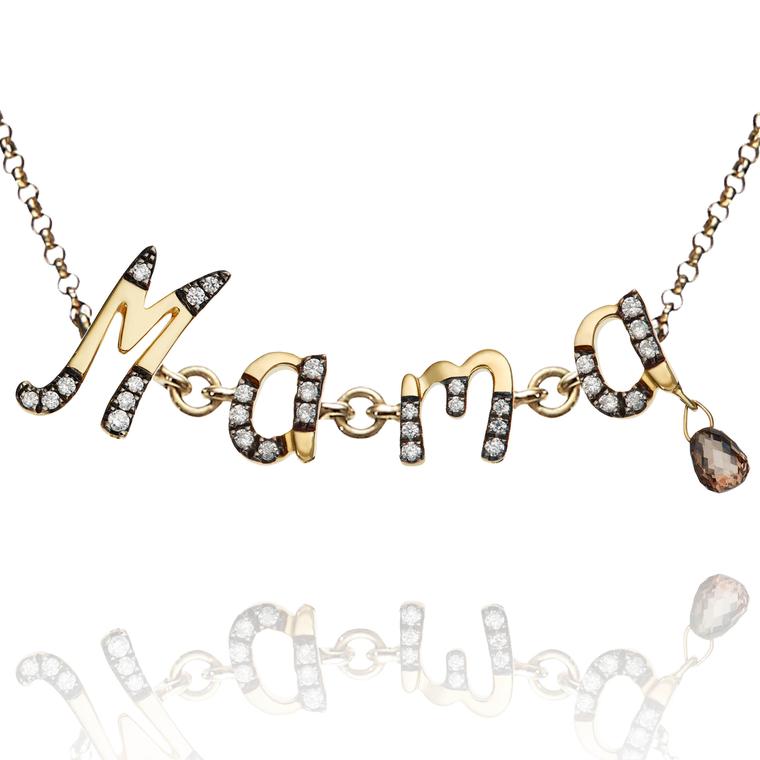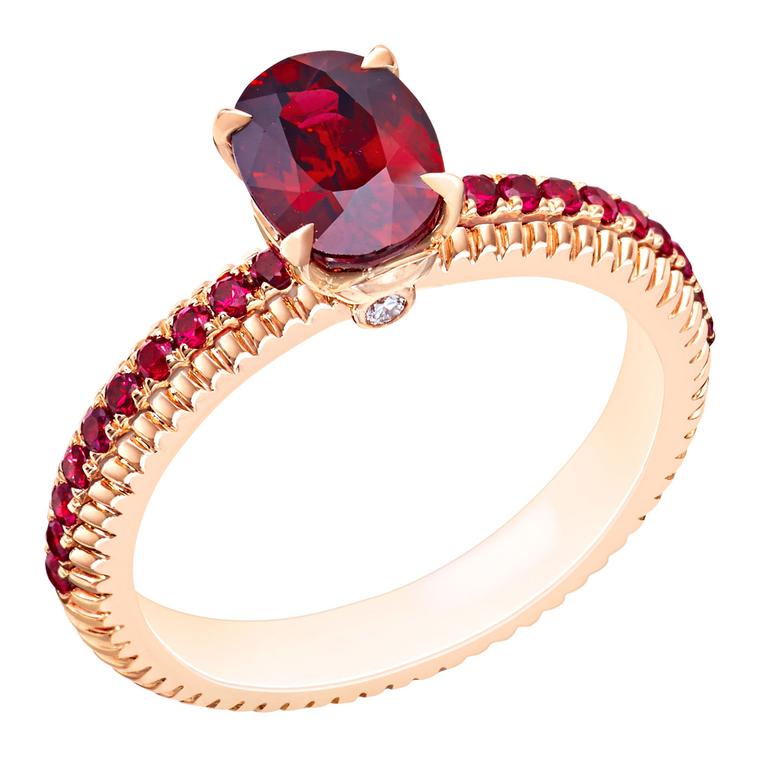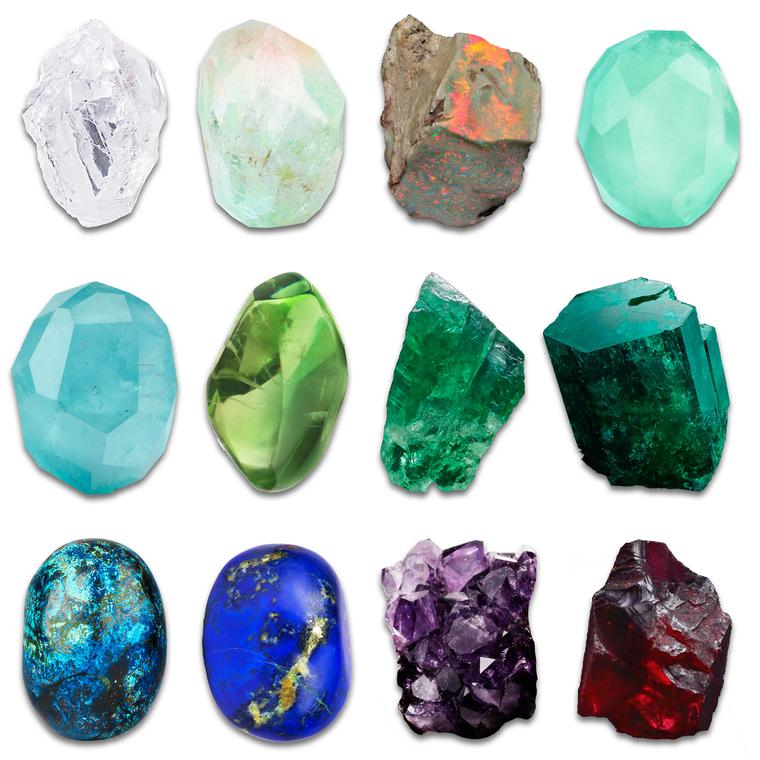Selecting an engagement ring can be tough. You want it to be a future heirloom that she will treasure, and also a design that reflects her personality. So for a ring that she will really connect with, why not propose with a birthstone engagement ring?
Non-diamond engagement rings are becoming increasingly popular, and unless your betrothed’s birthday falls in April – the month that claims diamond as its birthstone – this method allows you to introduce some colour. A dreamily azure aquamarine for March, a classic blue sapphire for September or a vivid blue topaz for December, perhaps.
Read on for inspiration for your birthstone engagement ring or scroll down for our quick guide to which gemstones you should avoid if you will be wearing your ring every day.
Multiple gemstone to choose from?
If your bride-to-be was born in one of the months with competing stones, you may have to choose between birthstones. December has four, with tanzanite, blue zircon, blue topaz and turquoise all competing for the hand of those born in the final month of the year. However, tanzanite, turquoise and zircon are not hardy enough to withstand daily wear - an important consideration if you want her engagement ring to last a lifetime.
Get to know the Moh's Hardness Scale
While the colourful world of gems offers many exciting possibilities, there is one important factor to consider when buying a birthstone engagement ring. Diamonds – the stone most commonly set in engagement rings – are chosen for their hardness and durability, but other birthstones are not so tough. Should your beloved be born in May or October, their birthstone would be an emerald or opal, gemstones that are fragile.
June boasts two unusual birthstone choices, pearl and alexandrite, but pearls are easily damaged and are not recommended for an engagement ring. To avoid making a costly mistake, a chat with an expert jeweller will help you determine whether the birthstone will fit with your budget and her lifestyle.
The Moh's Hardness Scale, which is used to measures how easily you can scratch a gem with a harder substance, will give you a good indication of whether a birthstone is suitable for an engagement ring. Other factors, such as toughness, stability and cut, all come into play when it comes to the ultimate durability of a gemstone, but as a rule of thumb, anything above 7.5 on the Moh's Scale is good. Conversely, anything below that, including emeralds (7.5), opals (5.5-6.5), tanzanites (6.5-7), turquoise (5-6), and pearls (2.5), should be avoided.
Canadian jeweller Kat Florence, who launched her own brand of jewellery specialising in unusual gemstones two years ago and is about to open a store on London’s Bond Street in October, believes that birthstone engagement rings are becoming increasingly popular – particularly with men who want an engagement ring that is personalised, but don’t quite know where to start.
“A lot of people are going in that direction,” says Florence, who has created engagement rings set with sapphires and alexandrite for women with these birthstones. “Everyone feels attracted to their birthstone, and jewellery represents who we are, so birthstones are the perfect point to begin.”
Read about the stories behind birthstones here
At-a-glance guide to birthstone engagement rings
The Moh's Hardness Scale measures the hardness of a gemstone on a scale of 1-10. Top of the list is a diamond, one of the hardest substances on earth, which scores 10 out of 10. At the bottom is the fragile pearl at 2.5. Easily scratchable, pearls are not recommended for an engagement ring.
If you are considering a birthstone for your engagement ring, first check out whether it is hard enough to withstand everyday wear. If a gem scores less than 7.5 on the Moh's Hardness Scale, we recommend finding an alternative stone.
January:
Birthstone: Garnet
6.5-7.5 on the Moh's Hardness Scale - not recommended for an engagement ring.
February:
Birthstone: Amethyst
7.0 on the Moh's Hardness Scale - not recommended for an engagement ring.
March:
Birthstone: Aquamarine
7.5-8.0 on the Moh's Hardness Scale - not the hardest of gems, but worth considering for an engagement ring.
April:
Birthstone: Diamond
10 on the Moh's Hardness Scale - top of the list.
May:
Birthstone: Emerald
7.5-8.0 on the Moh's Hardness Scale, but emeralds normally have inclusions - minute cavities trapped inside the gem - which make them much more fragile than the Moh's Scale suggests. Avoid for an engagement ring.
June:
Birthstones: Pearl, Moonstone and Alexandrite
At 2.5 on the Moh's Scale, pearls are a definite no-no, as are moonstones, which score 6.0-6-5. Alexandrites score a more solid 8.5, so if you are a June baby, this is the only birthstone engagement ring we would recommend.
July:
Birthstone: Ruby
9.0 on the Moh's Scale - perfectly suited to an engagement ring.
August:
Birthstones: Peridot, Sardonyx and Spinel
Avoid peridot and sardonyx - a type of onyx - which both score 7.0 on the Moh's scale. Spinel is a harder 8.0 and therefore suitable for an engagement ring.
September:
Birthstone: Sapphire
9.0 on the Moh's Scale - perfectly suited to an engagement ring.
October:
Birthstones: Opal and Tourmaline
At 5.5-6.5 on the Moh's Scale, opals are easily scratchable, while tourmalines (7.0-7.5) don't make the grade either. Avoid both for a birthstone engagement ring.
November:
Birthstones: Citrine and Topaz
7.0 and 8.0 respectively on the Moh's Hardness Scale, opt for a topaz birthstone engagement ring if you are born in November.
December:
Birthstones: Tanzanite, Blue zircon, Turquoise and Blue topaz
December babies are spoilt for choice with their birthstones, but only one - blue topaz, which scores 8.0 on the Moh's Scale - is hard enough to consider for an engagement ring. Blue zircon (7.5) is debatable, but steer clear of tanzanite (6.5-7.0) and turquoise (5.0-6.0).



